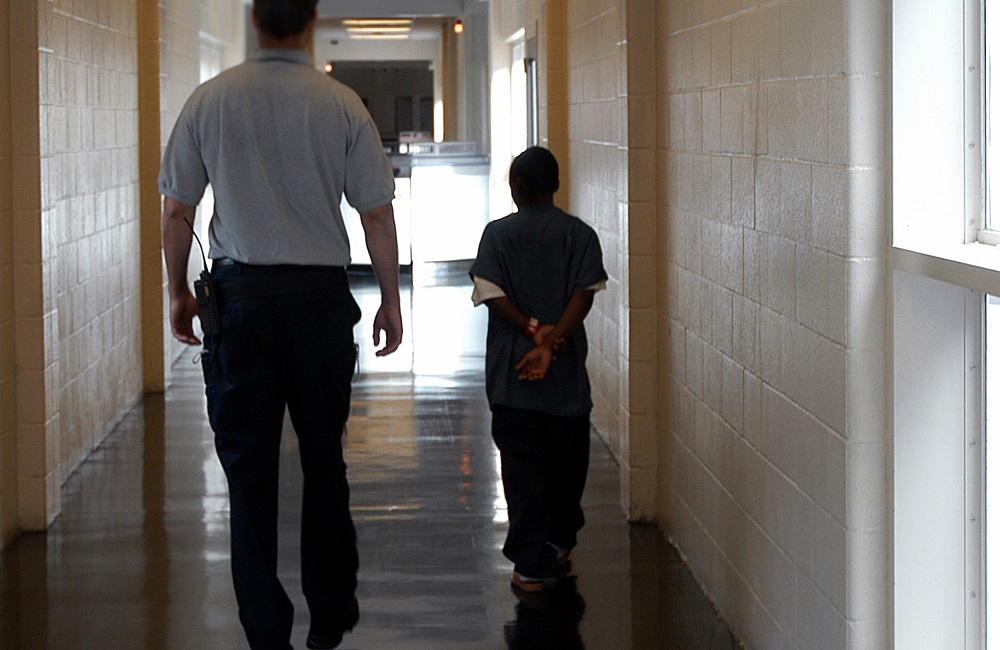Bullied at his Philadelphia high school, Earl Morris’ son started defying his teachers and his father and allegedly stole from a convenience store. Those charges against the then 15-year-old, who’d been diagnosed with disabilities including anxiety and depression, were dismissed when a witness failed to appear in court, his father said, recalling what happened five years ago.
And then there was the day soon after when Morris made what he calls “a tough decision” to summon the police after his son refused to go to school. “Basically he had a meltdown … I realized he needed help.”
For two months after that intervention by law enforcement officers, his son, who asked not to be named, was treated at the Fairmount Behavioral Health System in Philadelphia. But the now 20-year-old remains plagued by the issues that fueled his teenage misbehavior and by what his father sees as an overall failure to prepare him to transition into adulthood.
For example, Morris does not remember his son ever conferring with high school counselors about his academic or vocational future, even though both traditional schools and those for incarcerated youth are required to create and follow a plan tailored to meet the behavioral and academic needs of students with disabilities. Morris’ son now is struggling to finish his high school diploma at an online school.
“The negative experiences he had really killed his will to learn,” said the young man’s father, a school building inspector. “I don’t think he was able to work to his full potential.”
Court officials often misunderstand disabilities
Children and teens with disabilities – intellectual, physical, emotional, developmental or some combination – make up at least two-thirds of those involved in the juvenile justice system, according to the National Disability Rights Network.
In some places, their overrepresentation is even more dramatic: According to Illinois Department of Juvenile Justice, in August 2022, the state’s most recent available data, 99% of incarcerated youth were diagnosed with at least one mental health disorder; roughly two-thirds were diagnosed with at least four.
Judges, police and others in the justice system who misunderstand or diminish those disorders sometimes make decisions and rulings that worsen the circumstances for youth already traumatized or disadvantaged by their disability, said attorney Jessica Gingold, of Equip for Equality, the state’s federally recognized watchdog and legal advocate for people with disabilities.
“If a kid is in a wheelchair or requires an American Sign Language interpreter, most people would agree that, of course, you need a ramp or an interpreter,” said Gingold, who manages the organization’s Education Justice Project. “But if a kid has an emotional disorder that causes them to act out in the courtroom, that’s harder.”

Courtesy of Jessica Gingold
Jessica Gingold
Children and youth with the severest forms of autism, Tourette’s syndrome or other disorders whose symptoms include verbal outbursts or exaggerated bodily movements, for instance, tend to scare judges, Gingold said.
About one-third of incarcerated minors qualify for disability services, including speech, occupational and physical therapy or special education, according to a 2020 report compiled by, among others, the Juvenile Law Center. That percentage compared to 14% of the youth population overall, though individual states’ rates range from 9% to 77%, according to those researchers, who also were from Drexel University, the Education Law Center of Pennsylvania and Southern Poverty Law Center.
Some jurisdictions do not keep track of youth with disabilities, and fewer than half of incarcerated juveniles with learning disabilities receive special education, the federal Office of Juvenile Justice and Delinquency Prevention has noted. Depriving youth of that education would violate the guarantees of 1975’s Individuals with Disabilities Education Act.
The individualized education program, or IEP, required by that federal law also guarantees parents or guardians the opportunity to help teachers design an IEP outlining how students with disabilities — incarcerated or not — will be taught and prepared for life after high school.
But parents of children with disabilities often are not told about those rights, and plans for a transition into young adulthood, in particular, fall short of requirements, some experts say, adding that the precise number of such students hasn’t been calculated.
For example, an IEP for an incarcerated 12th-grade Philadelphian, obtained by the Education Law Center and shared with the Youth Today, noted only that a counselor would help the student meet his goal to attend business classes by spending 30 minutes a month looking at college catalogs.
“That’s not a transition plan,” said Maura McInerney, the Education Law Center’s legal director. “These are the most educationally at-risk children in the disability community, and we really need to invest in them and understand they can have a future.”
The School District of Philadelphia, which is responsible for educating that city’s incarcerated juveniles and involving their families, declined Youth Today’s interview request.
The problem is repeated in juvenile correctional facilities across the country, said Diane Smith Howard, a senior staff attorney with the National Disability Rights Network. “I have never seen a transition plan on one of those IEPs,” she said. “We’re talking about thousands and thousands of youth, almost all of them African American or Hispanic.”
In court and school, students with disabilities are more likely to be punished
For children with disabilities, the racial disparities of punishment are evident before they’re jailed.

Courtesy of Diane Smith Howard
Diane Smith Howard
While Black children overall were 12 percentage points more likely to be disciplined in school than white children, the gap grew to 16 percentage points when those students were disabled, according to a 2012 report from The Civil Rights Project at UCLA. In Illinois, nearly 42% of Black students with disabilities were suspended at least once in a single school year, compared to 15% of Latino students and fewer than 8% of white students.
Those figures don’t take into account children whose disabilities have been misdiagnosed or not diagnosed at all. Those failures are more likely to occur with Black children, who disproportionately are accused of “acting out” in class and then punished, rather than having their disability addressed, said Aaron Clark-Rizzio, co-executive director of the Louisiana Center for Children’s Rights.
Black and Latino boys with disabilities account for 3% of students nationally, the American Civil Liberties Union says, but 12% of school arrests. That likely reflects, the ACLU contends, a lack of accurate diagnoses of behavioral and/or mental health disorders.
“Racism in our culture often means disabilities in Black children are not recognized as such,” he said. “If we see this behavior in white children we’re more likely to look for medical reasons.”
Ignoring students’ disabilities has a domino effect that too often lands them in jail. Students with disabilities are nearly three times more likely to be arrested than those without disabilities, according to the ACLU, and up to 10 times more likely in some states. Those disabilities then are more likely to cause problems with law enforcement, prosecutors, judges and correctional officers.
Using a disability as a defense sometimes has unintended consequences, said Gingold, the Illinois attorney.
“A lot of times when a disability is brought up, the system sees it as an aggravating circumstance,” she said. “It can be difficult to use that as an explanation why a young person is not complying in the way the court system expects. And then the judge might see that as a reason why the young person is dangerous and should be locked up.”
Earl Morris, whose son is Black, said he wishes the Philadelphia school district had better managed John’s disability. He does not remember the details of his son’s IEP, but said he’s sure it did not guide his education. That, he believes, diminished his son’s interest in school and sent him down the path to shoplifting.
“You need to nip it in the bud before it gets to that point,” Morris said. “It’s like pulling the trigger on a gun. Once the bullet leaves the gun it’s too late.”
***
Chicago-based journalist Matt Krupnick covers inequality, education and other topics.



























